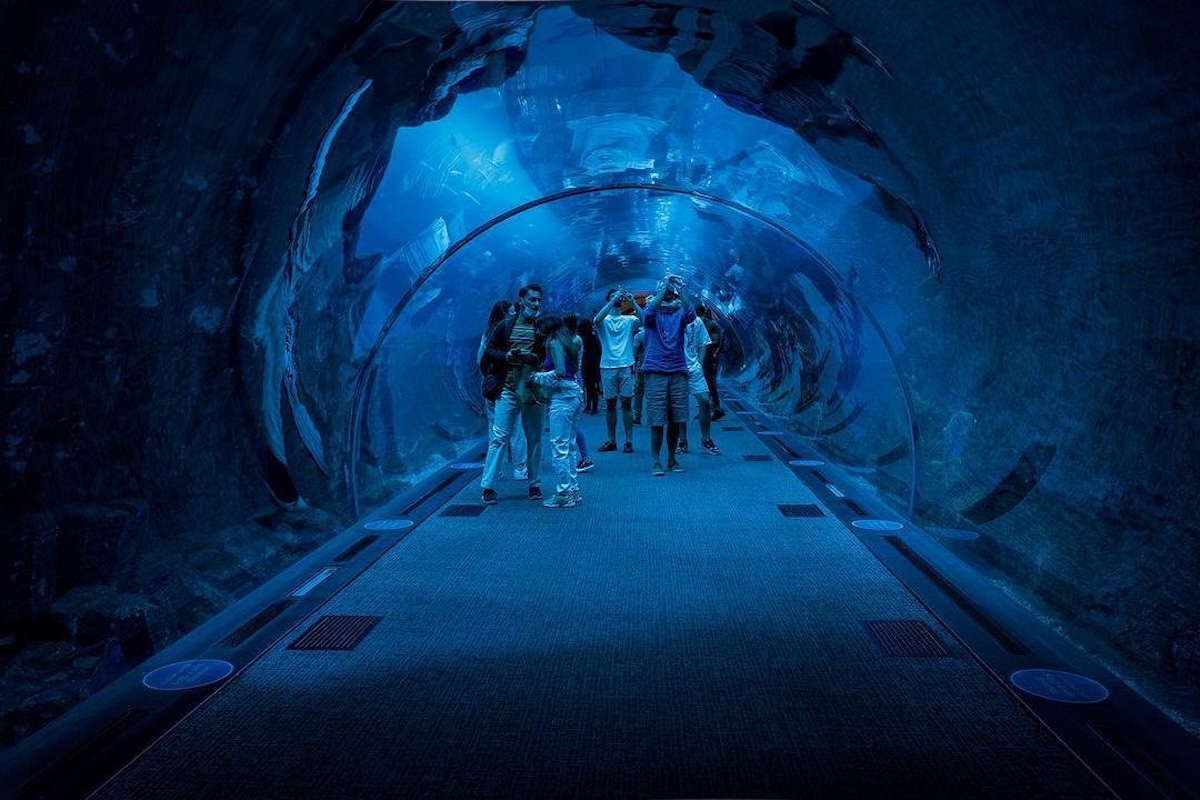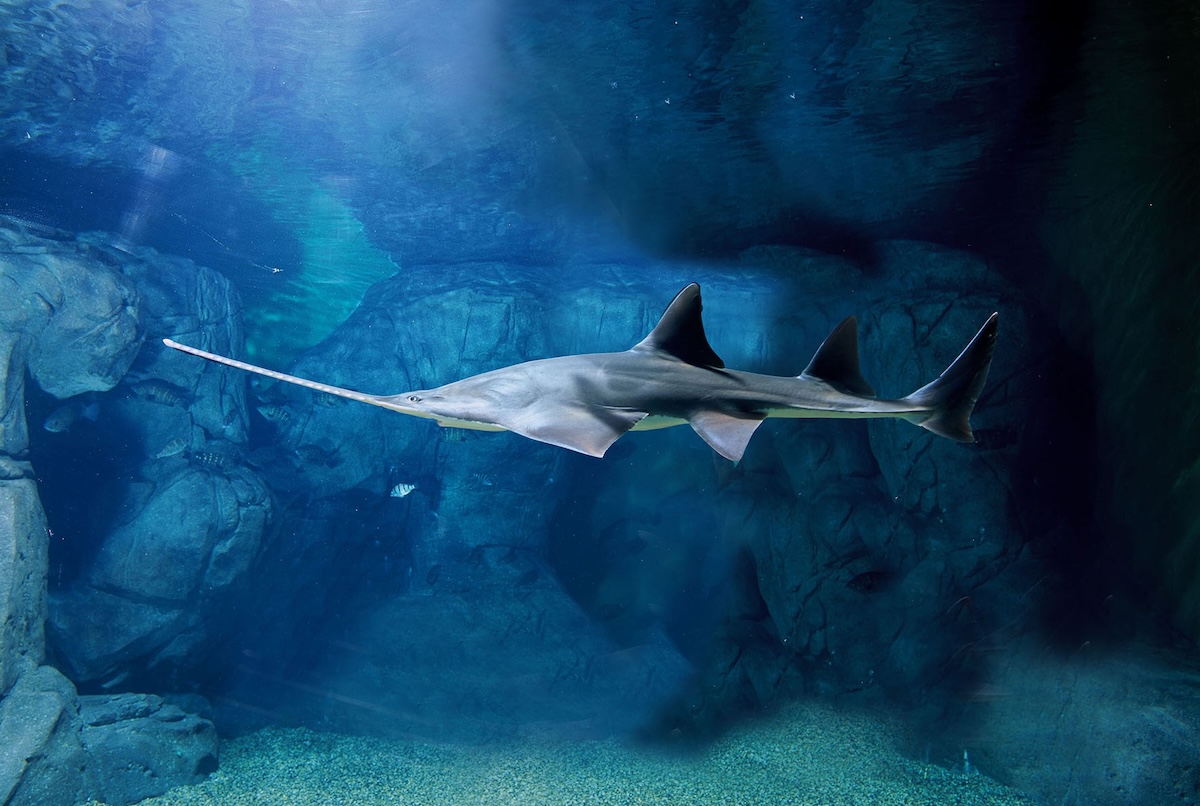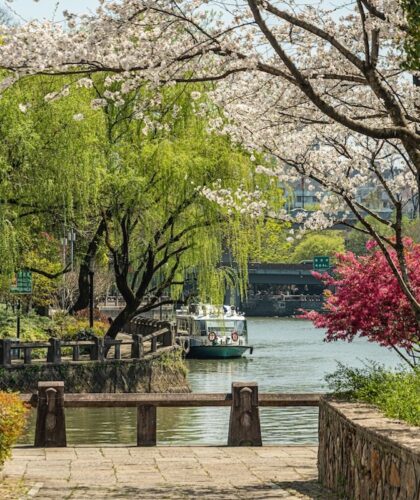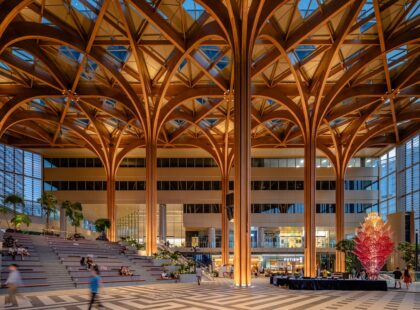Beyond their beauty, today’s large-scale aquariums – or oceanariums – are hubs of education, research and conservation, offering fresh insights into the fragile ecosystems that sustain life beneath the waves. From exciting new openings to beloved classics, here are five across Asia that combine science, story and spectacle.
Singapore: Singapore Oceanarium
The Little Red Dot’s brand-new Oceanarium opened in July 2025, transforming the former S.E.A. Aquarium into an ocean institute three times larger than its predecessor. Visitors can journey through 22 themed zones – including “In The Beginning”, “The Abyss” and “A New Horizon” – each using immersive displays and interactive features to tell the story of the seas.

Highlights include one of the world’s largest open-ocean viewing panels, a vast Kreisel tank filled with thousands of moon jellies, as well as life-sized animatronics that bring extinct sea creatures back to life. A dedicated Research & Learning Centre furthers marine conservation and sustainability efforts, making this destination as educational as it is awe-inspiring.
Taipei: Taichung Aquarium
After years of anticipation, Taichung’s new public aquarium opened in August 2025 near Wuqi Fishing Port. Spread over multiple levels, it offers eight themed zones, from Taiwan’s first suspended lotus-shaped tank to a penguin habitat, indoor wetland and garden-eel tank. Just under an hour from Taipei by bullet train, it’s an easy addition to a Taiwan itinerary.

Behind-the-scenes views allow visitors to observe aquarists at work in coral and jellyfish nurseries, its wetland research lab and central Taiwan’s first aquatic animal rescue centre. As one of Asia’s newest oceanariums, Taichung offers a fresh perspective for travellers exploring beyond Taiwan’s bustling cities.
Osaka: Osaka Aquarium Kaiyukan
One of the world’s best-known aquariums, Osaka’s Kaiyukan was also the largest when it opened in 1990. Now celebrating its 35th anniversary, it remains a perennial favourite. Located near Osaka Bay, it’s the perfect addition to any Kansai itinerary.

The experience begins on the eighth floor and spirals downward around the enormous Pacific Ocean tank, home to whale sharks, manta rays and countless other species. As of July 2025, two whale sharks are on display – a major draw. Guests also explore ecosystems from the Antarctic to the tropical rainforest, making Kaiyukan a must-see for families and marine enthusiasts alike.
Dubai: Dubai Aquarium
Inside the Dubai Mall sits one of the world’s largest indoor aquariums – a 10-million-litre tank viewed through a 48m tunnel, where sharks, rays and reef fish drift past in hypnotic fashion.

The attraction extends into the Underwater Zoo, which recreates habitats from rainforests to rocky shores. Recent enhancements include Penguin Cove, where visitors meet Gentoo penguins in a climate-controlled environment. For more adventure, guests can book glass-bottom boat rides, cage snorkelling or behind-the-scenes tours – transforming a mall visit into a marine expedition.
Shanghai: Shanghai Ocean Aquarium
Next to the Oriental Pearl Tower in Pudong, the Shanghai Ocean Aquarium is best known for its 155m underwater tunnel – one of the world’s longest – where sharks, rays and shoals of tropical fish swim overhead.

Exhibits span global aquatic environments, from the Amazon rainforest and Antarctica to Australian’s rivers and African coasts. The standout is the China Zone, home to rare species like the endangered Chinese sturgeon and the giant salamander. With more than 450 species and over 15,000 aquatic animals, it blends spectacle with education.
For more information on Singapore Airlines’ flights to the above destinations, visit singaporeair.com.
Feature image: Caroline Hernandez/ Unsplash







